
Venice: The Floating City of Romance and History
Discover the timeless charm and romance of Venice, Italy, where winding canals, historic landmarks, and artistic treasures create a unique and unforgettable travel experience.
Venice, a city built on water, is known for its winding canals, stunning architecture, and rich history. This enchanting city is made up of 118 small islands connected by over 400 bridges. With no cars or roads, the primary mode of transportation is by boat, giving visitors a unique and serene experience as they navigate the city's waterways. The heart of Venice is the iconic St. Mark's Square, home to the awe-inspiring St. Mark's Basilica and the towering Campanile. The square is a bustling hub of activity, where visitors can enjoy a coffee at a historic café, listen to live music, and watch the world go by. Just a short walk away is the Doge's Palace, a masterpiece of Gothic architecture that offers a glimpse into the city's grand past. Exploring Venice's narrow alleyways and hidden corners reveals countless treasures, from charming piazzas and historic churches to local artisan shops and quaint cafés. The Rialto Bridge, one of the city's most famous landmarks, offers stunning views of the Grand Canal and is a must-visit for any traveler. For a truly magical experience, take a gondola ride through the canals at sunset, when the city's beauty is bathed in golden light. Venice is also renowned for its art and culture. The city hosts the prestigious Venice Biennale, an international art exhibition that attracts artists and visitors from around the world. The Peggy Guggenheim Collection, housed in a grand canal-side palace, features works by some of the most important artists of the 20th century. Food lovers will delight in Venice's culinary scene, which features fresh seafood, delicious cicchetti (small plates), and traditional Venetian dishes. Whether you're wandering through its historic streets, savoring its culinary delights, or simply soaking in its timeless beauty, Venice offers an unforgettable experience for every traveler.
Local tips in Venice
- Visit St. Mark's Basilica early in the morning or late in the afternoon to avoid the crowds.
- Purchase a Venezia Unica City Pass for discounted entry to major attractions and unlimited use of public transportation.
- Explore the lesser-known neighborhoods of Dorsoduro and Cannaregio for a more authentic Venetian experience.
- Try the local cicchetti (small plates) at a traditional bacaro (wine bar) for a taste of authentic Venetian cuisine.
- Take a day trip to the nearby islands of Murano, Burano, and Torcello for a different perspective on Venetian life.
Neighbourhoods in Venice
Venice: The Floating City of Romance and History
Venice, a city built on water, is known for its winding canals, stunning architecture, and rich history. This enchanting city is made up of 118 small islands connected by over 400 bridges. With no cars or roads, the primary mode of transportation is by boat, giving visitors a unique and serene experience as they navigate the city's waterways. The heart of Venice is the iconic St. Mark's Square, home to the awe-inspiring St. Mark's Basilica and the towering Campanile. The square is a bustling hub of activity, where visitors can enjoy a coffee at a historic café, listen to live music, and watch the world go by. Just a short walk away is the Doge's Palace, a masterpiece of Gothic architecture that offers a glimpse into the city's grand past. Exploring Venice's narrow alleyways and hidden corners reveals countless treasures, from charming piazzas and historic churches to local artisan shops and quaint cafés. The Rialto Bridge, one of the city's most famous landmarks, offers stunning views of the Grand Canal and is a must-visit for any traveler. For a truly magical experience, take a gondola ride through the canals at sunset, when the city's beauty is bathed in golden light. Venice is also renowned for its art and culture. The city hosts the prestigious Venice Biennale, an international art exhibition that attracts artists and visitors from around the world. The Peggy Guggenheim Collection, housed in a grand canal-side palace, features works by some of the most important artists of the 20th century. Food lovers will delight in Venice's culinary scene, which features fresh seafood, delicious cicchetti (small plates), and traditional Venetian dishes. Whether you're wandering through its historic streets, savoring its culinary delights, or simply soaking in its timeless beauty, Venice offers an unforgettable experience for every traveler.
When is the best time to go to Venice?
Iconic landmarks you can’t miss
St. Mark's Square
Experience the vibrant heart of Venice at St. Mark's Square, a historic plaza surrounded by stunning architecture and lively atmosphere.

Rialto Bridge
Explore the iconic Rialto Bridge in Venice, a breathtaking architectural marvel that connects vibrant markets with stunning canal views.

Doge's Palace
Discover the grandeur of Doge's Palace, a historical gem in Venice showcasing exquisite Gothic architecture and captivating art.

Bridge of Sighs
Discover the haunting beauty of Venice's Bridge of Sighs, a historical landmark connecting the Doge's Palace to the city's prisons.

Saint Mark's Basilica
Discover the enchanting Saint Mark's Basilica in Venice, a masterpiece of Byzantine architecture and a symbol of the city's rich cultural heritage.

Ponte dell'Accademia
Discover the beauty of Ponte dell'Accademia, a historic wooden bridge in Venice, offering stunning views and a glimpse of the city's rich cultural heritage.

Palazzo Contarini del Bovolo
Explore Palazzo Contarini del Bovolo, a stunning historical landmark in Venice known for its iconic spiral staircase and rich architectural heritage.

Basilica S.Maria Gloriosa dei Frari
Discover the architectural beauty and artistic treasures of the Basilica di Santa Maria Gloriosa dei Frari, a must-see landmark in Venice.

Basilica di Santa Maria della Salute
Discover the stunning Basilica di Santa Maria della Salute, a baroque masterpiece in Venice known for its breathtaking dome and rich artistic history.

Venetian Arsenal
Discover the rich maritime heritage of Venice at the Venetian Arsenal, a UNESCO World Heritage site that highlights the city's history and architectural beauty.

Church of San Giorgio Maggiore
Explore the Church of San Giorgio Maggiore, a stunning abbey in Venice known for its breathtaking architecture and panoramic views of the city.

St Mark's Campanile
Experience the breathtaking views and rich history of St Mark's Campanile, a must-see landmark in the heart of Venice.

Tintoretto Scuola Grande di San Rocco
Discover the breathtaking artistry of Jacopo Tintoretto at the Scuola Grande di San Rocco, a gem in Venice's rich cultural tapestry.

Basilica dei Santi Giovanni e Paolo
Experience the captivating beauty and rich history of Basilica dei Santi Giovanni e Paolo, a must-visit Gothic masterpiece in Venice.

Grand Canal
Discover the timeless beauty and cultural richness of Venice's Grand Canal, an iconic waterway lined with stunning architecture and unforgettable experiences.

Unmissable attractions to see
Piazza San Marco
Discover the enchanting beauty and vibrant atmosphere of Piazza San Marco, Venice's iconic heart and a must-visit tourist attraction.

Ponte di Rialto
Explore Venice's iconic Ponte di Rialto, a stunning bridge that connects history, culture, and breathtaking views over the Grand Canal.
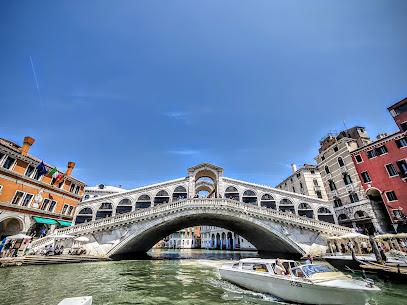
The Basilica of St. Anthony
Discover the architectural beauty and spiritual significance of the Basilica of St. Anthony in Padua, a must-visit destination for travelers.

Doge's Palace
Explore the opulent Doge's Palace in Venice, a stunning Gothic masterpiece and a symbol of the city's rich history and artistic heritage.

Libreria Acqua Alta
Experience the enchanting Libreria Acqua Alta in Venice, a whimsical bookshop filled with literary treasures and unique decor that captures the city's charm.

Saint Mark's Basilica
Discover the breathtaking beauty and rich history of Saint Mark's Basilica, a Venice gem showcasing stunning mosaics and iconic architecture.

Bridge of Sighs
Explore the haunting beauty and rich history of the Bridge of Sighs, an iconic landmark in the heart of Venice, Italy.

Ponte dell'Accademia
Explore the iconic Ponte dell'Accademia in Venice, a stunning wooden bridge rich in history, offering breathtaking views of the Grand Canal.
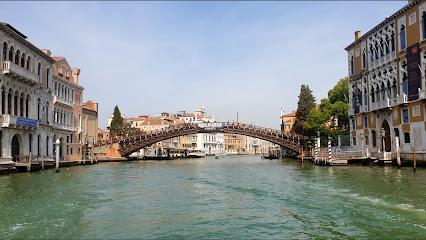
Scrovegni Chapel
Explore the Scrovegni Chapel in Padua, a UNESCO World Heritage site showcasing Giotto's breathtaking frescoes and rich historical significance.

Teatro La Fenice
Experience the grandeur of Teatro La Fenice, Venice's premier opera house, where history and culture come alive in a breathtaking setting.

Peggy Guggenheim Collection
Discover the Peggy Guggenheim Collection in Venice, a premier art museum showcasing modern masterpieces amidst stunning canal views.

Basilica S.Maria Gloriosa dei Frari
Explore the artistic and spiritual heart of Venice at the Basilica di Santa Maria Gloriosa dei Frari, a masterpiece of Gothic architecture filled with history.

Giardini della Biennale
Explore the tranquility and artistic brilliance of Giardini della Biennale, a premier cultural garden in the heart of Venice, Italy.

Basilica Santa Maria della Salute
Explore the breathtaking Basilica Santa Maria della Salute in Venice, a stunning Baroque masterpiece that embodies the city's rich history and artistic heritage.

Burano
Discover the colorful charm of Burano, an enchanting island in the Venetian Lagoon known for its vibrant houses and exquisite lace-making tradition.

Essential places to dine
Trattoria Al Gazzettino
Savor authentic Italian cuisine at Trattoria Al Gazzettino in Venice, where fresh seafood meets traditional flavors in a warm atmosphere.

Rio Novo
Experience exquisite seafood and authentic Italian cuisine at Rio Novo, one of Venice's premier dining destinations for food lovers.

Bacaro Quebrado
Experience authentic Venetian cuisine at Bacaro Quebrado, where delicious cicchetti and local wines create unforgettable moments in Venice.

La Zucca
Experience authentic Venetian cuisine at La Zucca, where seasonal ingredients meet traditional recipes in a charming setting.

Bistrot de Venise
Experience the essence of Venetian cuisine at Bistrot de Venise, where fine dining meets unforgettable flavors in an elegant setting.

Baci & Pasta
Experience authentic Italian cuisine at Baci & Pasta, where fresh pasta meets Venetian charm in an affordable setting.

Impronta
Experience authentic Venetian cuisine at Impronta - where fresh seafood meets Italian tradition in a warm family-friendly atmosphere.

Trattoria ai Cugnai dal 1911
Discover authentic Italian flavors at Trattoria ai Cugnai, where Venetian culinary traditions come alive in every dish.

Trattoria Il Vagone
Experience authentic Venetian seafood at Trattoria Il Vagone - where tradition meets taste in a charming setting.

Osteria Bancogiro
Experience authentic Venetian flavors at Osteria Bancogiro near Rialto Bridge—where exquisite seafood meets traditional Italian cuisine in a charming setting.

Trattoria da'a Marisa
Discover authentic Italian cuisine at Trattoria da'a Marisa in Venice, where fresh seafood meets traditional recipes in a charming canal-side setting.

Ristorante Da Carletto
Experience authentic Italian cuisine at Ristorante Da Carletto in Venice - where tradition meets modern culinary artistry.

Algiubagio Restaurant
Discover Algiubagio Restaurant in Venice: where exquisite Italian cuisine meets stunning waterfront views for an unforgettable dining experience.

Ristorante ai Barbacani
Experience authentic Venetian cuisine at Ristorante ai Barbacani—where fresh seafood meets traditional Italian flavors in a charming setting.

Bacaro Vintido'
Experience authentic Venetian cuisine at Bacaro Vintido', where every meal tells a story through exquisite flavors and warm hospitality.

Markets, malls and hidden boutiques
Nave de Vero
Explore Nave de Vero, Venice's vibrant shopping mall offering a range of stores, dining options, and family-friendly entertainment all in one place.

T Fondaco dei Tedeschi by DFS
Experience luxury shopping at T Fondaco dei Tedeschi, Venice's premier destination for fashion, beauty, and breathtaking views.

I Tre Mercanti
Discover the flavors of Italy at I Tre Mercanti, Venice's premier gourmet grocery store offering fine wines, artisanal cheeses, and sweet delicacies.

Malefatte Venezia
Explore Malefatte Venezia for exquisite handbags, cosmetics, and custom apparel, embodying the spirit of Venetian craftsmanship and style.

Louis Vuitton Venice
Discover the elegance of Louis Vuitton Venice, your ultimate destination for luxury leather goods, fashion accessories, and timeless elegance.

La Bottega Dei Mascareri
Discover the charm of handcrafted Venetian masks at La Bottega Dei Mascareri, a true gem in the heart of Venice, perfect for authentic souvenirs.

Gucci - Venezia
Discover luxury shopping at Gucci - Venezia, where Italian elegance meets Venetian charm in a stunning fashion experience.

Vintageria Venezia
Discover the unique charm of Vintageria Venezia, a vintage clothing store in Venice offering authentic retro fashion and accessories.
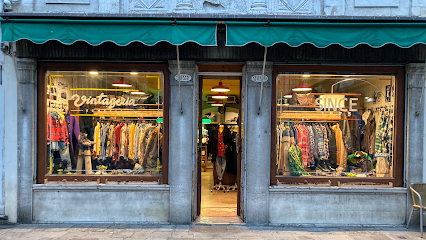
Il Grifone
Explore the artistry of leather craftsmanship at Il Grifone, Venice's premier destination for exquisite leather goods and accessories.

CHANEL Venice Store
Discover the epitome of luxury shopping at CHANEL Venice, where timeless elegance meets modern fashion in a breathtaking city.

L'albero Venezia
Discover unique handcrafted fashion accessories in Castello, Venice, at L'albero Venezia - a treasure trove of Venetian craftsmanship.

Stone Island Store Venezia
Explore the stylish world of menswear at Stone Island Store Venezia, where innovative fashion meets Venetian charm.

The Merchant Of Venice
Explore the artisanal charm of The Merchant of Venice, where luxury meets tradition in a stunning boutique experience.

David's Shop
Explore a charming gift shop in Venice, featuring unique Jewish memorabilia and exquisite Murano glass treasures.

QUORAMI
Discover Quorami in Venice - a boutique haven for handcrafted leather goods, from exquisite belts to stylish handbags, capturing Italian artistry.

Essential bars & hidden hideouts
Bacareto da Lele
Discover Bacareto da Lele: Venice's charming wine bar offering exquisite local wines and delicious cicchetti in a cozy atmosphere.

Devil’s Forest Pub
Discover the inviting atmosphere of Devil's Forest Pub in Venice, where cocktails and local brews create the perfect Italian experience.

Arcicchetti Bakaro
Discover the authentic taste of Venice at Arcicchetti Bakaro, where delightful cicchetti and local wines create unforgettable moments.

Irish Pub Santa Lucia
Discover an authentic Irish pub experience in the heart of Venice, offering hearty meals and a vibrant atmosphere for travelers.

Il Santo Bevitore craft pub
Discover Il Santo Bevitore, Venice's craft beer haven, offering a diverse selection of artisanal brews in a charming atmosphere perfect for relaxation.
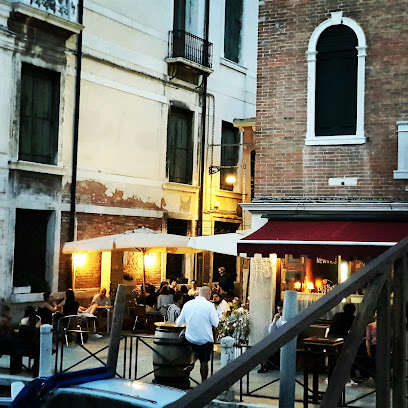
Margaret DuChamp
Discover the vibrant atmosphere and local flavors at Margaret DuChamp, a beloved pub in the heart of Venice's Campo Santa Margherita.

Osteria Ai Pugni
Experience the authentic flavors of Venice at Osteria Ai Pugni, a charming wine bar offering exquisite local wines and traditional dishes.

Il Mercante
Experience the essence of Venetian nightlife at Il Mercante, where unique cocktails and enchanting ambiance await you.

Skyline Rooftop Bar
Experience the enchanting views of Venice while sipping on exquisite cocktails at Skyline Rooftop Bar, the ultimate destination for luxury in the heart of the city.

TiME Social Bar
Experience the vibrant nightlife of Venice at TiME Social Bar, where exquisite cocktails meet a lively atmosphere and delicious tapas.

El Sbarlefo San Pantalon
Discover the vibrant ambiance and delicious drinks at El Sbarlefo San Pantalon, a charming bar in the heart of Venice's historic streets.

Wine Bar 5000
Discover the enchanting Wine Bar 5000 in Venice, where exquisite wines and delightful tapas await in a cozy, historic atmosphere.
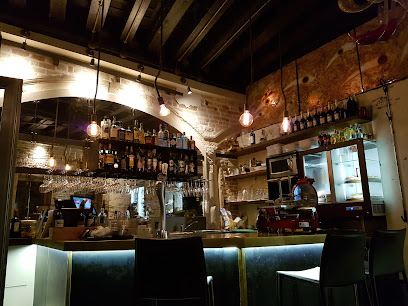
Bra's Cocktail Bar
Discover the lively Bra's Cocktail Bar in Venice, a vibrant spot for cocktails, delicious food, and an inclusive atmosphere for all.

Bar Longhi
Experience the charm of Venice at Bar Longhi, where exquisite drinks and local flavors come together in a stunning setting.

Local Phrases
-
- HelloCiao
[chow] - GoodbyeArrivederci
[ah-ree-veh-dehr-chee] - YesSì
[see] - NoNo
[no] - Please/You're welcomePer favore/Prego
[pehr fah-voh-reh/preh-goh] - Thank youGrazie
[grah-tsyeh] - Excuse me/SorryScusi/Mi dispiace
[skoo-zee/mee dees-pyah-cheh] - How are you?Come stai?
[koh-meh stah-ee] - Fine. And you?Bene. E tu?
[beh-neh. eh too] - Do you speak English?Parli inglese?
[pahr-lee een-gleh-zeh] - I don't understandNon capisco
[nohn kah-pee-skoh]
- HelloCiao
-
- I'd like to see the menu, pleaseVorrei vedere il menu, per favore
[vohr-ray veh-deh-reh eel meh-noo, pehr fah-voh-reh] - I don't eat meatNon mangio carne
[nohn mahn-joh kahr-neh] - Cheers!Salute!
[sah-loo-teh] - I would like to pay, pleaseVorrei pagare, per favore
[vohr-ray pah-gah-reh, pehr fah-voh-reh]
- I'd like to see the menu, pleaseVorrei vedere il menu, per favore
-
- Help!Aiuto!
[ah-yoo-toh] - Go away!Vai via!
[vai vee-ah] - Call the Police!Chiamate la polizia!
[kyah-mah-teh lah poh-lee-tsyah] - Call a doctor!Chiamate un medico!
[kyah-mah-teh oon meh-dee-koh] - I'm lostMi sono perso
[mee soh-no pehr-soh] - I'm illSono malato
[soh-no mah-lah-toh]
- Help!Aiuto!
-
- I'd like to buy...Vorrei comprare...
[vohr-ray kohm-prah-reh] - I'm just lookingSto solo guardando
[stoh soh-loh gwahr-dahn-doh] - How much is it?Quanto costa?
[kwahn-toh koh-stah] - That's too expensiveÈ troppo caro
[eh troh-poh kah-roh] - Can you lower the price?Può abbassare il prezzo?
[pwoh ahb-bahs-sah-reh eel preht-soh]
- I'd like to buy...Vorrei comprare...
-
- What time is it?Che ora è?
[keh oh-rah eh] - It's one o'clockÈ l'una
[eh loo-nah] - Half past (10)Sono le dieci e mezzo
[soh-no leh dee-eh-chee eh meh-tsoh] - MorningMattina
[maht-tee-nah] - AfternoonPomeriggio
[poh-meh-ree-joh] - EveningSera
[seh-rah] - YesterdayIeri
[yeh-ree] - TodayOggi
[oh-jee] - TomorrowDomani
[doh-mah-nee] - 1Uno
[oo-no] - 2Due
[dweh] - 3Tre
[treh] - 4Quattro
[kwah-troh] - 5Cinque
[cheen-kweh] - 6Sei
[say] - 7Sette
[seht-teh] - 8Otto
[oht-toh] - 9Nove
[noh-veh] - 10Dieci
[dee-eh-chee]
- What time is it?Che ora è?
-
- Where's a/the...?Dov'è un/il...?
[doh-veh oon/eel] - What's the address?Qual è l'indirizzo?
[kwahl eh leen-dee-reet-soh] - Can you show me (on the map)?Puoi mostrarmi (sulla mappa)?
[pwah-ee mohs-trahr-mee soo-lah mahp-pah] - When's the next (bus)?Quando passa il prossimo (autobus)?
[kwahn-doh pahs-sah eel prohss-see-moh ow-toh-boos] - A ticket (to ....)Un biglietto (per ....)
[oon beel-lyeh-toh pehr]
- Where's a/the...?Dov'è un/il...?
History of Venice
-
Venice was founded in the 5th century by refugees fleeing the invasions of northern tribes into Italy after the fall of the Roman Empire. The original settlers sought refuge in the marshy lagoon islands for their strategic location, which provided natural protection against invaders.
-
By the 9th century, Venice had emerged as a powerful maritime republic. Its strategic position along the trade routes between the East and West allowed it to dominate Mediterranean commerce. The city became a hub for trade, with goods like silk, spices, and precious metals flowing through its ports.
-
Venice played a crucial role in the Crusades, particularly the Fourth Crusade (1202-1204). The Venetians provided ships and logistical support in exchange for economic and territorial gains. This involvement led to the controversial sacking of Constantinople, which significantly boosted Venice's wealth and influence.
-
The 15th and 16th centuries marked the Golden Age of Venice. The city became a leading center of art, culture, and architecture. Renowned artists like Titian, Tintoretto, and Veronese flourished during this period, leaving behind a legacy of masterpieces that still adorn Venetian churches and palaces.
-
By the 17th century, Venice began to decline due to several factors, including competition from other European powers, the discovery of new trade routes, and the rise of the Ottoman Empire. Despite its decline, Venice maintained its political independence until 1797, when it was conquered by Napoleon and later handed over to the Austrian Empire.
-
From 1815 to 1866, Venice was part of the Austrian Empire following the Congress of Vienna. During this period, Venice experienced significant cultural and economic stagnation. However, it also saw the rise of a strong nationalist movement that ultimately led to Venice joining the Kingdom of Italy in 1866.
-
In the 20th and 21st centuries, Venice has faced numerous challenges, including flooding, environmental issues, and the impact of mass tourism. Efforts to preserve the city's unique heritage and architecture are ongoing, with initiatives like the MOSE project aimed at protecting Venice from rising sea levels and tidal surges.
-
The Carnival of Venice is one of the city's most famous cultural events, dating back to the 12th century. Known for its elaborate masks and costumes, the carnival was historically a time when social norms were relaxed, and people from all walks of life mingled freely. Today, it remains a major tourist attraction, drawing visitors from around the world.
-
Venetian cuisine is a reflection of the city's rich history and its role as a trading hub. Traditional dishes include 'risotto al nero di seppia' (squid ink risotto), 'sarde in saor' (sweet and sour sardines), and 'baccalà mantecato' (creamed codfish). The use of spices like cinnamon and cloves, brought by Venetian merchants from the East, adds a unique flavor to the local cuisine.
-
Venetian architecture is renowned for its distinctive Gothic style, characterized by pointed arches, elaborate facades, and intricate details. Iconic structures like the Doge's Palace and St. Mark's Basilica exemplify this style. The city's unique setting on water also led to the development of palazzi with grand canal-facing entrances, designed to impress both residents and visitors.
Venice Essentials
-
Venice is accessible by air, rail, road, and sea. The nearest airport is Marco Polo Airport (VCE), located about 13 kilometers from the city center. From the airport, you can take a water taxi or the ACTV bus to Piazzale Roma. Venice is also well-connected by train, with Santa Lucia Station serving as the main rail hub. For those arriving by car, parking is available at Tronchetto or Piazzale Roma, but it's important to note that Venice's historic center is car-free. Cruise ships also dock at the Venice Cruise Terminal, offering another convenient entry point.
-
Venice is renowned for its unique transportation system, which relies on waterways rather than roads. The primary modes of transport are vaporetti (water buses), water taxis, and gondolas. The vaporetti are the most cost-effective way to get around, with routes covering the Grand Canal and the lagoon islands. Water taxis offer a more private but expensive option. Gondolas are best suited for short, scenic trips rather than practical transportation. Walking is also a great way to explore the city's narrow streets and alleys, but be prepared for numerous bridges and stairs.
-
The official currency in Venice is the Euro (EUR). Credit and debit cards are widely accepted in hotels, restaurants, and larger shops, but it's advisable to carry some cash for smaller establishments and markets. ATMs are plentiful throughout the city. Tipping is not mandatory but is appreciated; rounding up the bill or leaving a small amount for good service is customary.
-
Venice is generally a safe city for tourists, but standard precautions should be taken. Be aware of pickpockets, especially in crowded areas like Piazza San Marco, Rialto Bridge, and on public transportation. Avoid poorly lit and deserted areas at night. The Cannaregio district, particularly around the train station, has reported higher incidents of petty crime, so extra caution is advised there.
-
In case of emergency, dial 112 for immediate assistance. Venice has several hospitals and clinics, with the main hospital being Ospedale SS Giovanni e Paolo. Pharmacies are also widely available for minor health issues. It's advisable to have travel insurance that covers medical emergencies. For lost or stolen items, report to the local police station (Questura) for assistance.
-
Fashion: Do dress modestly, especially when visiting religious sites; shoulders and knees should be covered. Avoid overly casual attire in fine dining establishments. Religion: Do respect local customs and traditions. Always remain quiet and respectful inside churches. Public Transport: Do validate your ticket before boarding vaporetti. Don't block the passageways and be respectful of seating. Greetings: Do greet people with a polite 'Buongiorno' (good morning) or 'Buonasera' (good evening). A handshake is common for formal introductions. Eating & Drinking: Do try local delicacies and savor Venetian cuisine. Don't rush meals; dining is a leisurely and social experience.
-
To experience Venice like a local, visit the less touristy areas such as Cannaregio and Dorsoduro. Enjoy a spritz at a local bacaro (wine bar) and try cicchetti (Venetian tapas). Take advantage of the Traghetto, a gondola service that ferries people across the Grand Canal for a minimal fee. Visit the Rialto Market early in the morning for fresh produce and seafood. Engage with locals; Venetians are generally friendly and willing to share their city's rich history and culture.
Trending Landmark in Venice
-
St. Mark's Square
-
Rialto Bridge
-
Doge's Palace
-
Bridge of Sighs
-
Saint Mark's Basilica
-
Ponte dell'Accademia
-
Palazzo Contarini del Bovolo
-
Basilica S.Maria Gloriosa dei Frari
-
Basilica di Santa Maria della Salute
-
Venetian Arsenal
-
Church of San Giorgio Maggiore
-
St Mark's Campanile
-
Tintoretto Scuola Grande di San Rocco
-
Basilica dei Santi Giovanni e Paolo
-
Grand Canal
Nearby Cities to Venice
-
Things To Do in Piran
-
Things To Do in Portorož
-
Things To Do in Verona
-
Things To Do in Izola
-
Things To Do in Koper
-
Things To Do in Rovinj
-
Things To Do in Ravenna
-
Things To Do in Trieste
-
Things To Do in Nova Gorica
-
Things To Do in Sežana
-
Things To Do in Bologna
-
Things To Do in Pula
-
Things To Do in Modena
-
Things To Do in Postojna
-
Things To Do in Rimini



















